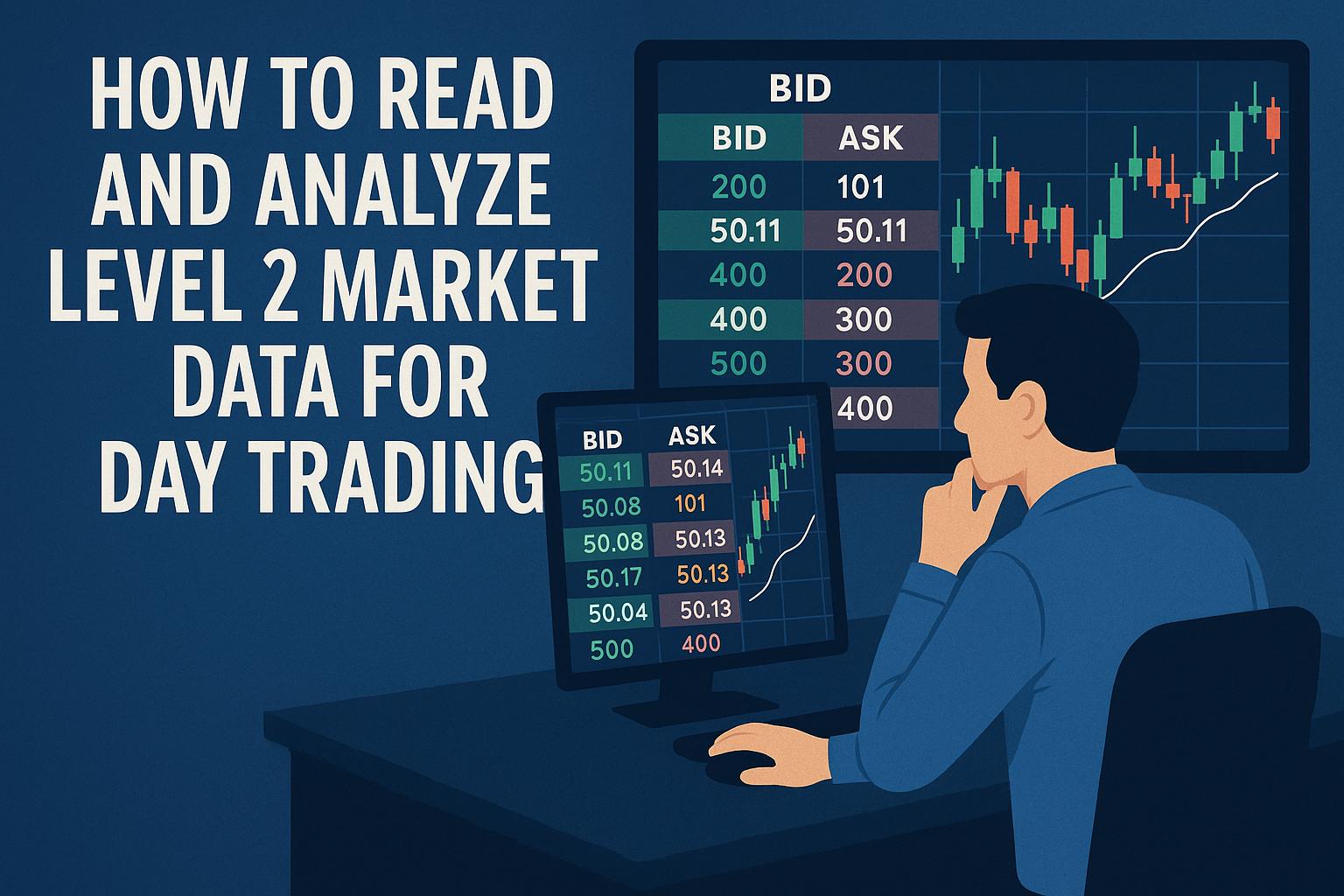Understanding Level 2 Market Data
Level 2 market data provides a comprehensive view of the trading dynamics of a financial instrument, particularly stocks. This data is known as the “order book,” which catalogs the buy and sell orders for a particular security, detailing prices and quantities. Through the meticulous analysis of Level 2 data, day traders can glean insights into market trends and potential price shifts. It offers a more granular view that lies beyond the scope of the last traded price and the bid-ask spread found in Level 1 data.
The Key Components of Level 2 Data
Market Makers and ECNs: Level 2 data illustrates bids and asks from an array of market makers and electronic communication networks (ECNs). Market makers play a vital role by providing liquidity, consistently prepared to buy or sell at publicly quoted prices. This function stabilizes the market and ensures that trading can occur smoothly without significant interruptions or delays.
Bid and Ask Prices: In this context, the bid price represents the highest price that buyers are willing to pay for a security, while the ask price denotes the lowest price a seller is inclined to accept. The variance between these two prices is termed the spread, which is an essential indicator of market liquidity and volatility.
Order Size: The order size accompanying the bid and ask prices reveals the number of shares available for purchase or sale at each price tier. This metric is crucial for traders, as it enables them to assess the volume and pressure present on each facet of the market, aiding in more informed decision-making processes.
Interpreting Level 2 Data for Trading
To maximize the utility of Level 2 data, traders need to develop acumen in interpreting the elements and columns it constitutes. Variations in bid and ask sizes or their respective positions can foretell impending price fluctuations, offering clues for strategic actions.
Identifying Support and Resistance Levels: Carefully examining the volume of bids and asks across various price brackets enables traders to pinpoint potential support and resistance levels. Substantial concentrations of bids or asks can hint at price levels where the movement may stall or reverse direction.
Evaluating Market Depth: The analysis of buy and sell order quantities yields insights into market depth. Markets characterized by significant activity often demonstrate lower volatility, whereas those with fewer active orders can exhibit abrupt and rapid price changes.
Practical Application in Day Trading
For many day traders, Level 2 data becomes an indispensable component of their short-term trading strategy. By closely monitoring this data, traders can:
Time Entries and Exits: Observing trends or noteworthy shifts in bid and ask volumes assists traders in timing their entries and exits more precisely, maximizing potential gains while minimizing risks.
Monitor Institutional Activity: A surge in bid or ask volumes can indicate the presence of institutional players, signaling potential significant price movements. Understanding these signs allows traders to anticipate large market shifts in advance.
Understand Order Flow: By tracking order execution patterns, traders can gain insights into market sentiment, which supports a robust framework for projecting price trends and movements.
Tools and Platforms Providing Level 2 Data
Several brokerage platforms include Level 2 data within their suite of trading services. These platforms might integrate additional functionalities that assist in swiftly digesting and deciphering detailed information. When selecting a platform, it is prudent to confirm whether it offers a comprehensive toolkit suited for displaying and analyzing Level 2 data effectively. Additionally, be conscious of any potential charges associated with accessing such data, as some platforms might require a paid subscription.
For those seeking greater detail, delving into trading-specific resources may prove advantageous. Reputable platforms such as Nasdaq can provide vital resources that enhance one’s understanding of market data intricacies.
Conclusion
The art of reading and interpreting Level 2 market data demands practice and meticulous attention to the dynamics of market orders. By familiarizing themselves with the subtleties of this data layer, traders can elevate their ability to capitalize on market movements, thereby establishing Level 2 data as an indispensable tool for day traders in pursuit of a competitive advantage. With consistent practice and analysis, traders can refine their skills and enhance their trading efficacy.
This article was last updated on: September 2, 2025


